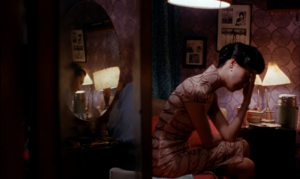There’s never been a better time for viewing international, and especially European, cinema in Australia; indeed, Australians may just be in the best position in the world for such content. That’s the position of Palace Cinemas CEO Benjamin Zeccola, and he has the goods to back it up: specifically, an almost continuous slate of film festivals that collectively add up to a feeling that, if you live near a Palace theatre, world cinema never stops.
Palace presents the French, Italian, Spanish, British, Scandinavian, German, Irish and Japanese film festivals, each for around four weeks and most playing in all of Palace’s markets: Sydney, Melbourne, Canberra, Adelaide, Perth, Brisbane and Byron Bay. They all earn their keep – or, if not, are retired or folded into another event. One example of the latter is the Cine Latino Film Festival; as it was not returning enough on its own, it has since 2020 operated as a section within the Spanish Film Festival.
Some of these events are run entirely in house – as is the case with the Italian, Spanish and Scandinavian festivals, for which members of the Palace team travel overseas to source the best available content – while the rest are partnered and co-curated with a range of stakeholders. The Japanese and Irish festivals, for instance, both organise their entire events themselves (including their curation and marketing), and each simply brings a total package to Palace for the chain to host.
Each festival has its own appeal. Some, such as the French and Italian festivals, can rely on a significant percentage of their sales deriving from migrant, expatriate and ancestral communities. Others appeal to Australian audiences’ fascination with other parts of the world, Zeccola says:
With the Scandinavian Film Festival, it’s not so much people who come from Scandinavia or are related to people that come from Scandinavia [who attend]; it’s simply people who love Scandi films or Scandi style. Or that sense of exoticness that comes from a place like Iceland. Iceland – Tasmania has a greater population, I think – creates every year a couple of stupendous films, just incredible works of art, and that is so alluring to us. There are so many great Scandi movies [that] weren’t getting released in Australia, and the landscapes of Scandinavia – the filmmaking in Scandinavia – are so spectacular [that] we wanted to show that on the big screen […] A festival is the only way to umbrella all the costs and promotion and create this magnificent environment and ambience to see the films.
It’s also the physical environment of Palace and other chains’ infrastructure that contributes to Zeccola’s assertion that Australia is a world-leading place to see global cinema.
‘The quality of cinemas in Australia is second to none,’ he says.
I was surprised around New York, in LA, in Paris and in Rome that the quality of cinemas was so far behind Australia. [In Australia] everything is carpeted, state-of-the-art seating and sound, clean foyers; around the world, you don’t find that – there are genuine fleapits. They have sloped floors! I was surprised in LA [to see that] many of the floors are concrete without any carpet on them – old seats, old curtains, old foyers.
In France, if you’re watching an arthouse film, some of the arthouses are really old-fashioned, more like the Carlton Movie House was or the Longford was in Melbourne, and they were great – but that was the ’80s, and that’s fortysomething years ago now, and standards have moved on. Australians probably don’t realise just how high the standard is of cinema in this country. And then, on top of that, you’ve got all these fantastic film distributors who are extremely skilful at acquiring foreign films and releasing them here. There are films that get released in Australia that never get released in London […] You would think that there are more European films screened in London than in Australia, but it’s the exact opposite – same for New York and other great cultural cities. There are more film festivals, and more cinemas, and more quality cinemas per head of population here than anywhere else, and I think that’s a wonderful expression of the great culture of Australia.
The distributors Zeccola refers to pay close attention to the individual performances of programmed films, and will often swoop on content proving popular at Palace’s festivals so that wider audiences may, in a matter of weeks, see well-performing films in the festivals get a general release:
The distributors can be credited with their fast manoeuvring. Whether it’s Transmission, Rialto or any of the other many, many distributors who supply the film festivals, they’re all ready, waiting and hoping that their film is one of the [festival’s major hits].
Zeccola reckons a film’s festival takings won’t cut into the distributor’s future box office, either, so it’s a win-win:
The festival launches the film, giving that film a kind of national profile it wouldn’t have any other way [and] doing a terrific job of marketing that film. The takings at the film festival, which are shared with the distributor as well, are an essential part of the whole equation, and relied on by the distributor […] A film could be overscreened at a festival and then not find a life afterward, but usually the festival audiences are not sufficient to deplete any further exploitation of the film.
The biggest winner is Australian audiences, offered an astonishing slate of quality global cinema year-round in top-notch cinemas with luxurious seats, smart foyers, mature food-and-alcohol policies and, yes, plenty of carpeting underfoot. There’s no dreaded dubbing, either.





